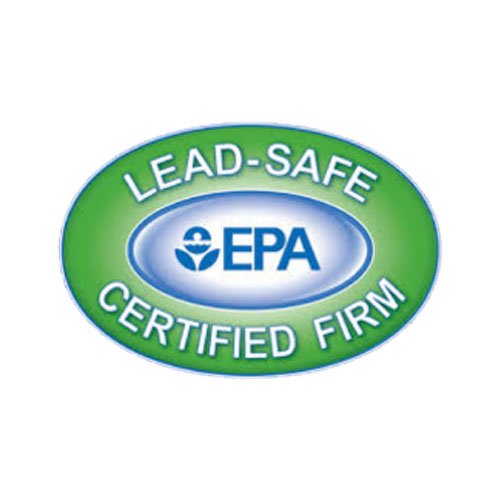Home improvement projects have continued to soar through the summer, with house exterior painting remaining one the most popular ones. When it comes to painting a home or structure, there are a lot of different products to choose from. Selecting between a stain, solid stain, oil-based, or latex paint can feel overwhelming.
The good news is that there are a lot of advantages to each. Which you select will depend on your particular project and what your goals are. Once you have those in mind, it is only a matter of sorting through the advantages of each choice.
The information below will break down some of the pros and cons of each type of primer and paint. Keep reading to find out which combination is right for your home.
Traditional vs. Solid Stains
When people refer to a “stain” they are usually talking about a “transparent stain.” This means that the product soaks into the wood and provides a clear layer of protection to the surface.
Which stain you select is contingent on the type of finish you plan to use. If you plan to paint the surface, then a traditional stain is the way to go. If not, a solid stain may be an option.
You need to seal traditional stains with another layer, such as paint. A solid stain provides enough protection of the wood without the need for a second coat. They are opaque, which means they also do not need a coat of paint either.
Going with a solid stain can translate to time and cost savings. Note that, while it may be enough to apply only a single layer of solid stain, two coats will add protection and longevity to the surface.
One of the main reasons to choose a solid stain over a traditional one is that it shows the wood grain. Conversely, if the surface has a lot of imperfections, then a traditional stain along with a coat of paint, can help conceal them.
While paint can peel over time, a solid stain can fade. Also, note that you cannot apply a solid stain to wood that already has a coat of paint on it.
Oil vs Latex Paint
Until recently, oil-based paint was the standard for all external jobs. While that is not the case anymore, there are still some good reasons to use it.
What is latex paint? It refers to any paint that is not oil-based, but it most often is a water-based product.
Latex paint has been around since 1941 and has increased in popularity over the years. That is due to advances in paint composition that have mitigated some of the traditional drawbacks of the product.
There are still advantages that each type of paint afford. Here is a breakdown of the main ones to consider.
Basic Characteristics
Some experts believe oil-based paints offer a better finish in general since they can produce a smoother, more uniform surface. But it depends on the surface. For weathered or distressed ones, latex paints may create a better seal.
Latex paints have better adhesion to wood. They “flex” better than oil-based paints, which are more likely to crack under certain conditions. Once applied, latex paints do not yellow over time like some oil-based paints.
There are some outdoor conditions where oil-based paint holds up better over time. If painting wood, water-based latex paints can cause it to swell. This might mean sanding it before applying a second coat.
Both paints are long-lasting. Latex paints are very mold- and mildew-resistant, while oil-based paints provide a robust seal.
Application
Almost all latex paints require more than one coat. One big advantage of oil paints is that often–though not always–a single coat is enough.
A primer is necessary when applying any oil-based paint. Latex paints do not need one for application.
They are fast-drying (as short as a few hours), which can be a huge advantage for jobs that you want to consolidate into one day. It also means work crews do not have to return, so it helps save on labor costs. But, if it dries too fast, latex paint could leave brush marks behind.
Oil-based paint is slower drying than latex paint. It can take several days to a week for it to completely dry. This can be a challenge for external applications since it requires several precipitation-free days for drying.
Another advantage of latex paint is that you can use it year-round. Historically, painting in lower temperatures would make it more difficult to get an even coat. But new paint formulas allow use even in freezing temperatures.
Because it is thinner than oil-based paint, latex paint can be easier to use. Latex spray paint can significantly increase job efficiency.
Environmental Impact and Cleanup
Latex paints have no volatile organic compounds, or VOC, emissions, like oil-based ones. If inhaled, VOCs can cause adverse health effects. The amount of VOC permitted in paint products varies by state.
It is worth noting that low-VOC and VOC-free oil-based paints are available. Even with these products, technicians should only work in ventilated areas and use protective respiratory equipment. This is not necessary for water-based paints.
In general, latex paints are easier to clean up than oil-based ones, which warrant the use of chemicals like turpentine and mineral spirits. With latex, you only need soap and water. There are regulations on the disposal of oil-based paints that are unnecessary for latex paints.
Find Home Painting Experts Near You
Now that you have an idea of the stain and paint options available, you can decide whether oil or latex paint is the best option for your home. For further information about this decision, consult a reputable paint company. They will be able to advise you on what product will look and hold up better for your unique project.
At Ulta Home Improvements, we have creative designers and experienced specialists to help you through every step of your paint project. Besides quality craftsmanship, we pride ourselves on exemplary customer service. Reach out to us today for a free quote and consultation.








